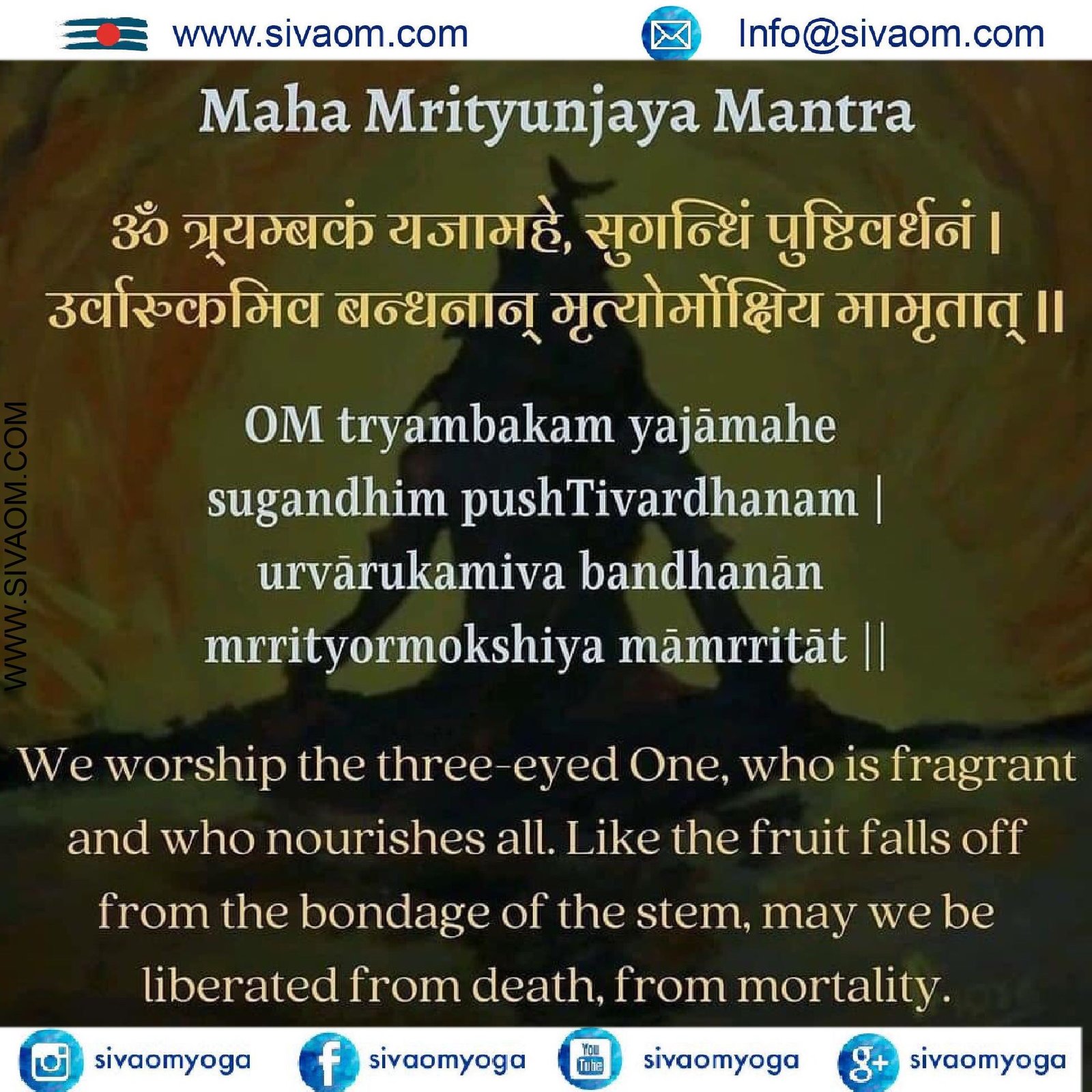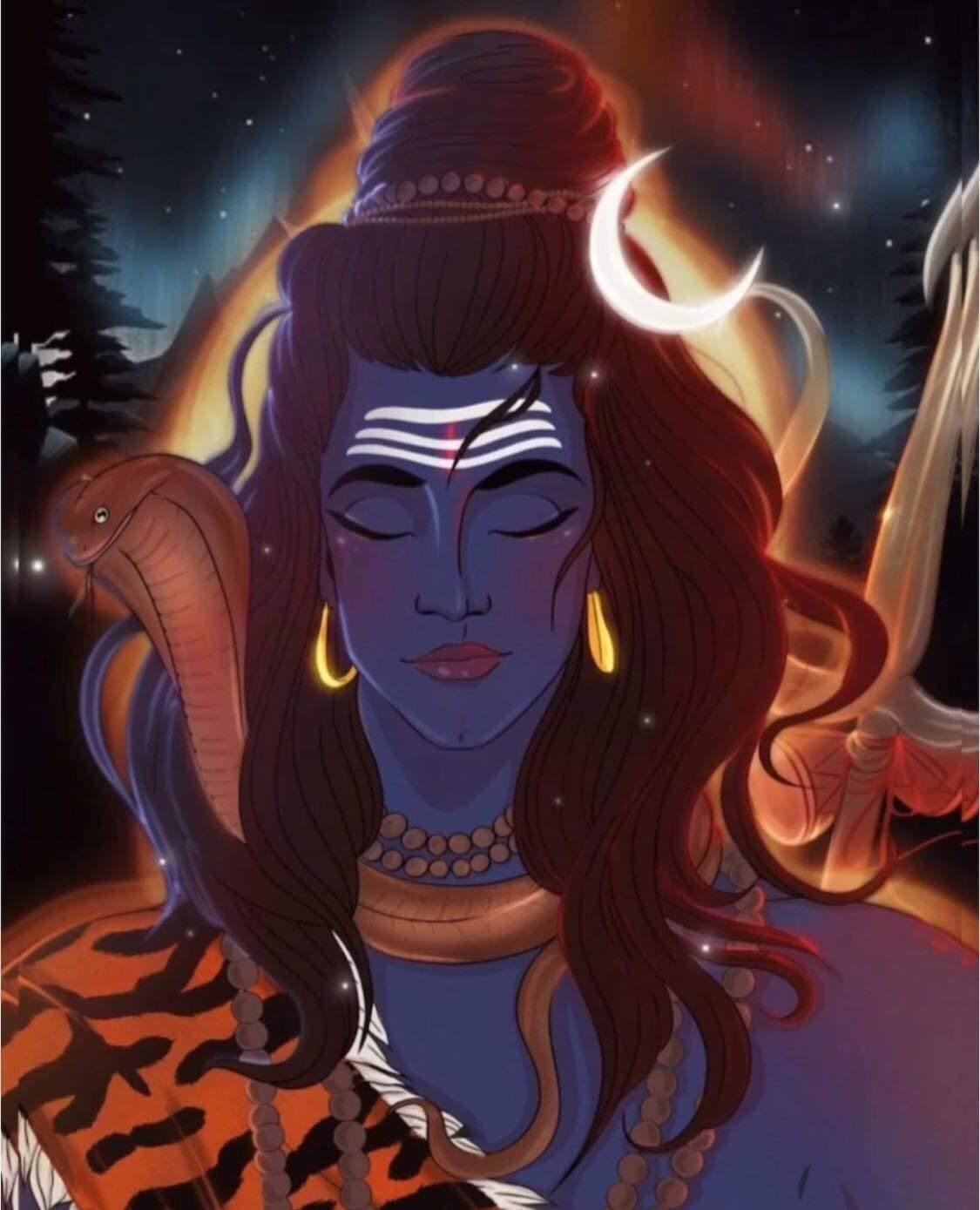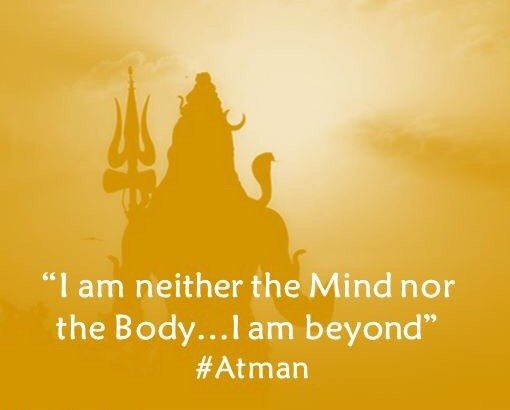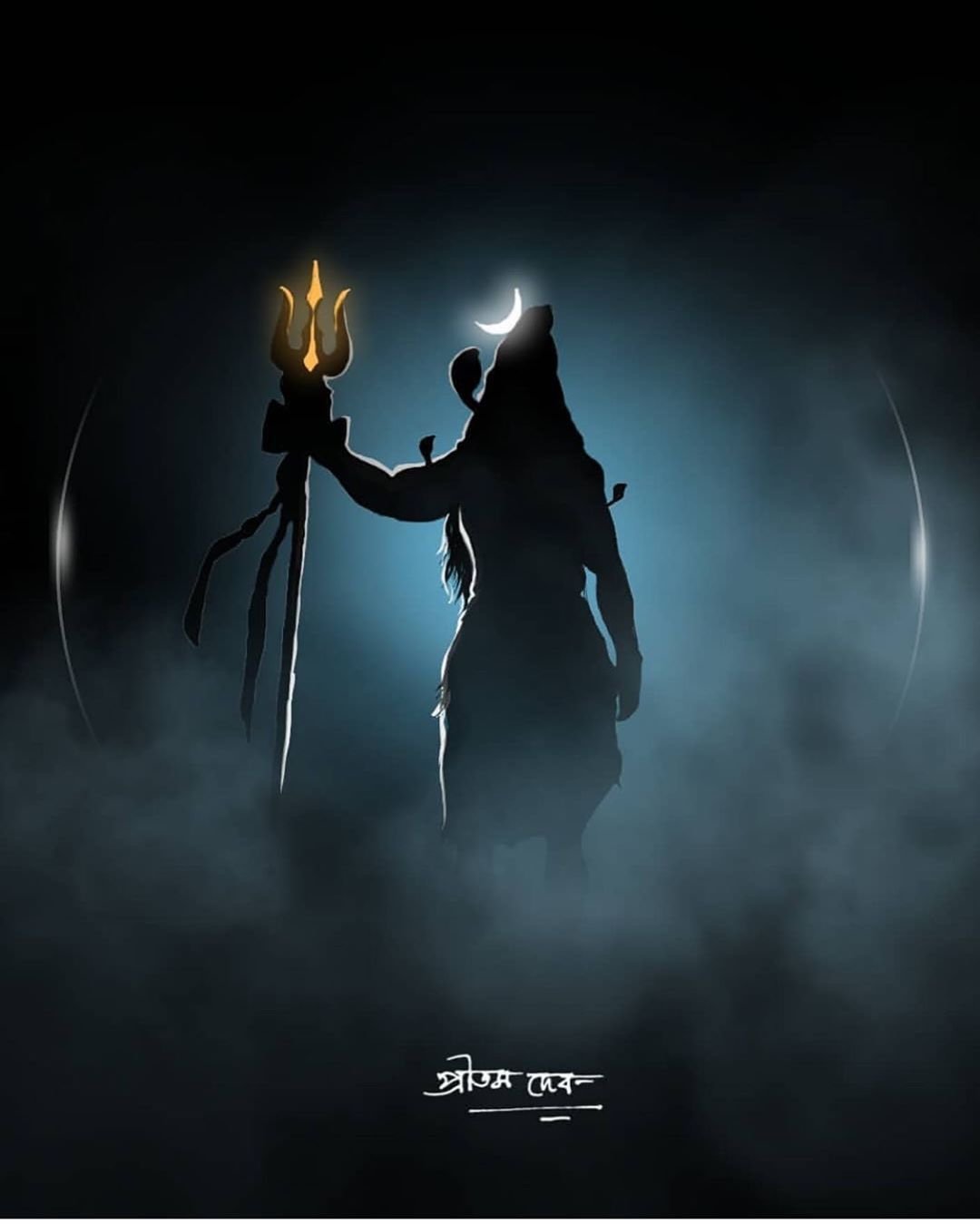om tryambakaṃ yajāmahe sugandhiṃ puṣṭivardhanam
urvārukamiva bandhanānmṛtyor mukṣīya maamṛtāt

The Mahamrityunjaya Mantra, believed to originate from Rigveda, stands as a powerful chant renowned for its healing properties. Devotees chant this mantra to invoke the blessings of Lord Shiva, the omniscient three-eyed deity, for protection from ailments, death, and suffering.
The mantra commences with the sacred syllable “Om,” symbolizing the universe and divinity. “Tryambakam” extols Lord Shiva as the three-eyed deity, while “Yajamahe” expresses worship and reverence.
“Sugandhim” alludes to the Lord’s fragrant nature, signifying purity and auspiciousness. “Pushthivardhanam” portrays Lord Shiva as the nurturing gardener, fostering growth and prosperity among all creations.
“Urvārukamiva” metaphorically compares the Lord’s protective powers to a cucumber sheltered by its robust vine. “Bandhanān” denotes being bound down, while “Mṛtyormukṣīya” signifies liberation from the bonds of death.
The concluding line, “Māmṛtāt,” holds multiple interpretations. It may seek protection from death while embracing immortality or request the bestowal of life-rejuvenating nectar for vitality and longevity.

The origin of this secret mantra is steeped in mythology, with Rishi Markandeya being the only one in the world who knew it. Legend has it that the Moon was once in trouble and cursed by King Daksha. Rishi Markandeya gave the Mahamritryunjaya Mantra to Sati, Daksha’s daughter, for the Moon’s well-being.
The mantra is also known as the Rudra mantra, symbolizing the furious aspect of Lord Shiva. The Tryambakam mantra alludes to Shiva’s three eyes and is sometimes called the Mrita-Sanjivini mantra, as it forms a part of the life-restoring practice given to the primordial sage Sukracharya.
The Mahamritryunjaya Mantra is a potent tool for seekers of yoga and spirituality. It has found its place in the Vedas and holds within it the essence of the divine. So let us invoke the blessings of the three-eyed Lord Shiva and elevate our consciousness to new heights.

The Mahamrityunjaya Mantra, a sacred and powerful invocation to Bhagwan Shiv, holds profound significance in spirituality. Believed to bestow longevity, immortality, and protection against untimely death, this mantra is revered for its immense benefits to mental, emotional, and physical well-being.
When chanted, the Mahamrityunjaya Mantra infuses the practitioner with divine energy and guidance, facilitating a profound connection with the true nature of consciousness. This transformative practice, known as Japa, involves the rhythmic repetition of the mantra, fostering heightened concentration, and expanded awareness.
The Mahamrityunjaya Mantra can be incorporated into various spiritual practices to harness its healing and rejuvenating properties. Whether applied during the application of Vibhuti over different parts of the body or integrated into Japa or Homa (havan) rituals, this mantra serves as a potent tool for manifesting desired outcomes and fostering spiritual growth.
While the Gayatri Mantra primarily serves to purify and guide spiritually, the Mahamrityunjaya Mantra offers a distinct focus on healing, rejuvenation, and nurturing the practitioner’s well-being. Its resonance with the divine essence of Lord Shiva enriches the spiritual journey, offering solace, strength, and profound transformation.

EXCELLENTTrustindex verifies that the original source of the review is Google. If you are really seeking to find the truth then Sivaom School of Yoga is what you need. For me it is a life changing point.Trustindex verifies that the original source of the review is Google. Learning yoga at the Sivaom School of Yoga was a journey of awakening and deep knowledge. Becoming a teacher is a great responsibility and one has to be very well prepared to manage with human body, mind and soul. Studying yoga at the Sivaom School of Yoga I was exposed to the original Vedic scriptures and was prepared by my GuruJi Siddthartha Shiv Khanna to be able to teach the Sivaom practice, developed by himself and that includes a union of the four main branches of Yoga (Raja, Karma, Jann and Bhakti). By practicing this combination of teachings we are enabled to bring ourselves in to balance and a perfect alignment between body, mind and soul.Trustindex verifies that the original source of the review is Google. The most authentic classes in Greece, is very important for the world to know that yoga its not just asan, I am very glad that the siva om school of yoga is out there spreading the real teachings! If you are looking for yoga classes or trainings thats the place you need.Trustindex verifies that the original source of the review is Google. Siddharth is a great teacher. Due to my constant back pain I had reached out to him to help me strengthen my back and get some movement. He guided me throughout the sessions and got me back to where I was able to go out for a walk and have confidence in myself that I could do things and have a normal life despite the constant back pain. Now I am mobile however it’s a work in progress and with Siddharth’s guidance I am sure we will get there.Trustindex verifies that the original source of the review is Google. I have attended a few other yoga classes but Siddhartha is the best yoga teacher....his way of teaching yoga not only gives you a healthy lifestyle changes your outlook on life making you a mentally stronger person ....SivaOm is a highly recommended place .Trustindex verifies that the original source of the review is Google. I had my first class at Sivaom school of yoga a few weeks before and it was a unique experience. What I loved most was the feeling coming close to myself, finding joy, connection and deep focus. Many teachers can teach you the physical alignment of yoga asanas but Siddharta spreads the teaching of enlightenment, showing others that the greatest kingdom one can have dominion over is the realm of the heart!Trustindex verifies that the original source of the review is Google. If you are looking for an authentic yoga experience or teacher training then I cannot recommend Sivaom school of yoga enough!! Siddhartha is a unique and extremely knowledgeable teacher, his classes offer a wealth of information, taught with humour and love with no question is left unanswered. I have done several trainings but none like Sivaoms teacher training. Highly, highly recommend, 5 stars are not enough🙏Trustindex verifies that the original source of the review is Google. Being the only yoga teacher from India in Greece it is a privilege for one to learn yoga from Siddhartha. Personally I have been to India and couldn't find the same quality of yoga class. Siddhartha eats, drinks and breathes yoga and takes his students' development and well-being very seriously. I highly recommend this school
Siva Om (Registered Office)
39/71 West Punjabi Bagh,
New Delhi,
India – 110026
Phone: +91-9810900127
SivaOm School of Yoga, Mikras Asias 31, Athina 115 27 Greece
+30-6909729311 to speak in English.
Phone: +30-6909729311